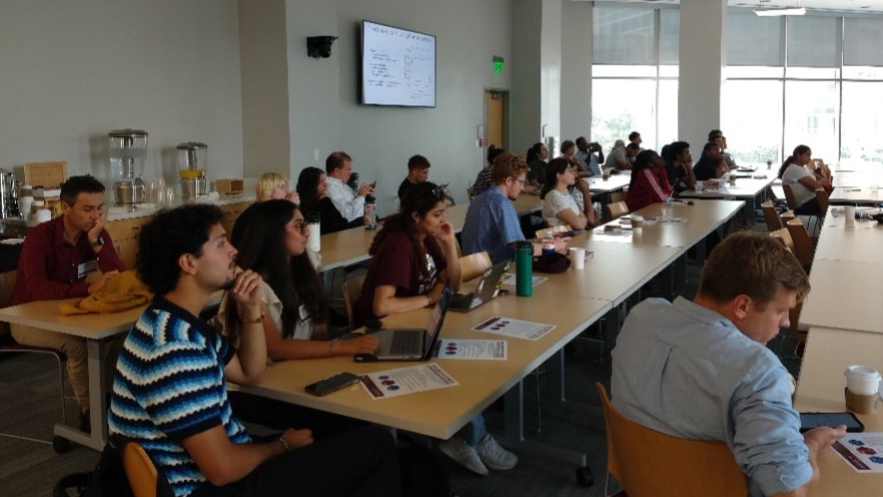
Developed to treat cancer, photodynamic therapy (PDT) and sonodynamic therapy (SDT) have evolved into versatile tools to manage and diagnose a variety of conditions. These outpatient procedures, which use light and ultrasound to target abnormal cells and tumors in the body, are gaining attention for their cost-effective applications and promising health care uses.
The Department of Biomedical Engineering at Texas A&M hosted the Mini Biophotonics Symposium on August 26 to present advances and challenges in PDT and SDT. Sponsored by the Hagler Institute for Advanced Study, the symposium brought together students and researchers interested in the applications of biophotonics for infection, disease treatment and cancer diagnostics to explore new and exciting PDT and SDT developments.
“As researchers, we are interested in carrying out frontier research in biophotonics; but as educators, we are interested in bringing in young people motivated to research the topic and its possibilities,” said symposium chair, biomedical engineering professor and CPRIT Scholar Dr. Vanderlei Bagnato. “This is an area that greatly needs entrepreneurs to make such techniques more popular in the United States and it is our motivated young students who will make this a reality.”
During the symposium, the editor-in-chief of the Photodiagnosis and Photodynamic Therapy journal, Dr. Ron Allison, unveiled a special issue of the journal that highlights the development and usage of PDT in Latin America, specifically in Brazil, with potential worldwide applications.
“The presence of the editor-in-chief reinforces the importance of our initiatives and the perspective we have at Texas A&M regarding the topic,” Bagnato added.
The symposium also featured lectures by global experts covering various aspects of biophotonics:
- Kate Blanco: "Antimicrobial Photodynamic Therapy"
- Cristina Karachi: "Photodynamic Therapy for Non-Melanoma Skin Cancer"
- Vanderlei Bagnato: “New Perspectives with Photo and Sonodynamic Therapy”
- Layla Pires: “Controlling Immune Responses with Photodynamic: New Possibilities Ahead”
Bagnato emphasized that the field of biophotonics paves the way for accessible health care, diagnosing diseases and breaking bacterial resistance to antibiotics. PDT, for instance, has shown the ability to eliminate antibiotic-resistant bacteria, making infections like pneumonia treatable with existing antibiotics, while SDT can noninvasively and more affordably treat skin cancer, including melanoma.
Bagnato hopes that students interested in researching the subject will be inspired by the lectures and other discussions during the symposium and will continue discovering the benefits of biophotonics in health care.
“The cost of medical treatment for cancer and infections is rising to the point of being prohibitive for many people, even in the US,” Bagnato said. “It is necessary to make technologies and procedures more appropriate to the economic reality of the people. In this sense, biophotonics are essential for this and we want to involve our young generation in this journey.”